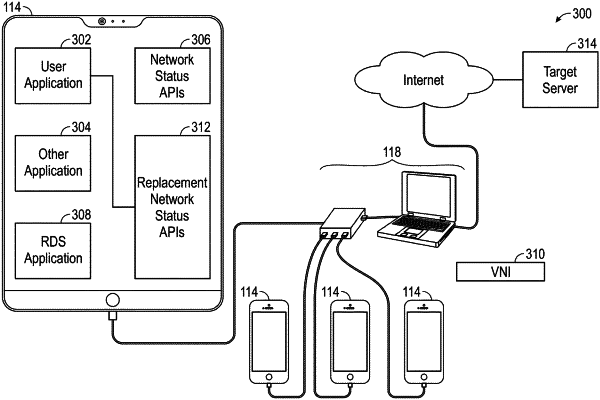| CPC G06F 11/3664 (2013.01) [G06F 8/61 (2013.01); G06F 9/547 (2013.01)] | 20 Claims |

|
1. A computer-implemented method comprising:
in a communication network between a browser, installed on a first computer, and a separate host computer, the separate host computer electrically coupled to a remote device, and providing network traffic to and from the remote device via the electrical coupling, wherein an operating system of the separate host computer comprises a virtual network interface layer, resident on the separate host computer, wherein the separate host computer is configured to further provide network traffic to and from the remote device via the virtual network interface layer,
executing an operating system network filtering command, on the virtual network interface layer, instructing the virtual network interface layer to block or reduce transmission speed of network traffic to and from a user application installed on the remote device, while allowing network traffic to and from a streaming application, installed on the remote device, wherein the user application comprises calls to a network status application programming interface (API), provided by an operating system of the remote device, the network status API configured to report a network traffic and access status indication via the network status API;
decompiling the user application;
detecting the calls in the user application to the network status API;
modifying the calls, by replacing the detected calls with calls to a replacement network status API, wherein the replacement network status API is configured to report a selected network traffic and access indication via the replacement network status API,
simulating an offline connectivity status and to simulate an offline connectivity status, the replacement status API issuing an offline status to the user application even as the remote device is connected to a network with functioning network communication link, and the network status API broadcasting a network ON status;
recompiling the user application with the modified calls; and
installing the recompiled user application on the remote device.
|